Three Projects, Three Ways: Valentine’s Gifts for Your Loved Ones


The ladies at “A Beautiful Mess” have amazing craft ideas, so we decided to try out their flower collage. The results are so fun!
Supply list:
A favorite family picture- blown up to 5*7 or larger
Fabric flowers; you can find these at a local craft store. For a fun touch, pick up some fabric butterflies too
Hot glue gun and glue sticks
A shadow box or a picture frame with the glass popped out
Directions:
Let inspiration be your guide; mock up your design before breaking out the glue gun
Glue flowers around the frame
Let the glue dry and then display your work of art!
Difficulty level: 1
A heart shaped picture collage:
Do you have so many favorite photos that you can’t pick just one? Are you an Instagram addict? Then this fun project is for you. You can use as many pictures as your frame will fit.
Supply list:
A picture frame
A piece of cardstock or paper cut to fit your frame
Cardstock cut into a stencil heart shape
A pile of your favorite photos
Scissors
Craft glue or scrapbooking adhesive
Fancy accent paper (optional)
Directions:
Decide the quantity of photographs you want to display
Arrange your photos on your blank sheet to determine the best placement
Cut each photo into the same size heart (use a stencil heart or heart shaped paper punch for this)
Arrange your pictures on the card stock
If you want to add some dimension, cut out hearts from the fancy accent paper to display behind your photos
Once everything is exactly how you like it, glue it all down
Let everything dry and finish by adding your frame!
Difficulty level: 2
The writing’s on the wall
Do you have a favorite quote about love? Make a modern wall hanging with some simple tools and your favorite words!
Supply list:
A wood frame for stretching canvas (can be found online or your local craft store)
Dark denim (enough to fit over canvas with a couple of extra inches all around)
A white fabric pencil
White fabric paint
Small acrylic paint brushes (with stiff bristles)
Masking tape
A staple gun and staples
A printed template of your favorite quote, as you would like to see it displayed
A window with natural light
Directions:
Tape your printed quote to a window with natural light shining through
Tape your fabric swatch over your template, and position the image/text in the middle of your fabric swatch (dark side facing you)
Using the white pencil, trace the quote and/or image clearly on your dark fabric
Once done, remove your fabric from the window and tape to a flat surface like a desk or table
Use the paint brush and white fabric paint to trace over your white sketches to make your text and/or image visible
Let your masterpiece dry for a few hours (amount of time varies based on the thickness of the applied paint)
Position your fabric over your wooded canvas frame. Make sure the placement is straight and where you want it
Hold your fabric in place over the frame and staple the sides to the back of the wooden frame, checking to make sure your image on the front is straight and the fabric is taught on the frame
If the fabric on the back of your frame is too long, you may want to consider trimming so it doesn’t peek out when the frame is hung on the wall
Find the perfect spot to hang your masterpiece or the perfect person to gift it to!
Difficultly level: 3
Happy Valentine’s Day! From all of us at Windermere Evergreen.
Home Security Systems: Protecting the People and Things You Value the Most
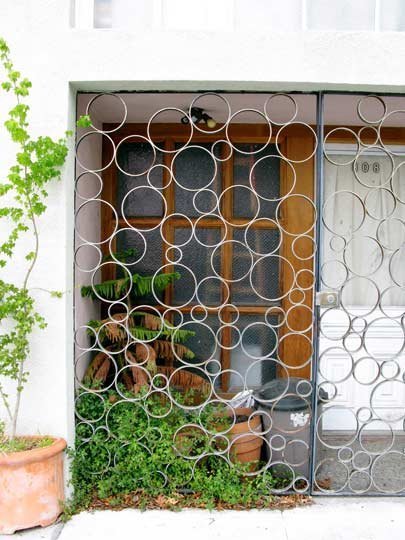
Home Security Systems: Protecting the People and Things You Value the Most
With warmer weather come open windows and extended vacations, so it should come as no surprise that the highest percentage of home burglaries happen during the summer months. With that in mind, now is a good time to start thinking about the security of your home. From old-school security tricks to new digital home monitoring tools, there are many options when it comes to keeping our homes safe. Read on to learn more about how you can modify your home and keep it safe from intruders.
Security bars and gates:
Sometimes the simplest security is just deterring people from trying to get in. While security bars across windows are a great way to keep intruders out of your home, they can be a real eyesore. Luckily, there are now options for decorative security bars that simultaneously protect your home while enhancing its beauty.
Upgrade you locks:
A poorly installed deadbolt can make it easy for an intruder to kick in your door. Start by making sure that your doorframes are in good condition and then look into getting a higher quality deadbolt. You’ll find everything from classic models with keys, or digital options that require passcodes or a fingerprint.
It’s also a good idea check all the locks on your windows. Some older models are easy to jimmy open with a little wiggling. For ground floor windows, you may want to consider double locks. It goes without saying, leaving windows open during the summer is a bad idea – especially those that can be easily accessed.
Exterior and interior home lighting:
Having your exterior lights on timers or motion sensors is a good way to deter nighttime snoopers. Add sensor lights to key entry points on your home, including the front door, back door, and/or basement entries. If you have an unused side yard, consider lighting there too. Keeping your home lit makes unwanted visitors weary of being seen.
If you will be gone from your home for an extended period of time, consider using timed lighting options in your home to make it appear someone is around. You can select timers for bedrooms or living areas. Also, you can program a radio to turn on and off for sound.
Alarm systems:
If you are considering an alarm, you have an array of options that vary from self-install motion detection kits to full-service home security systems. If you choose to do-it-yourself, you will want to install motion detectors on doors and windows – especially those that can be easily accessed on the ground floor. In most cases, these kits also offer a 24 hour call service for an extra fee.
Full-service security systems can include everything from an alarm system and panic buttons to and integration with your smoke detectors/ fire prevention system. These services are expensive up front, but usually have a reasonable monthly rate. And keep in mind, having a home security system installed can also reduce your insurance rates.
If installing an alarm system is cost-prohibitive or does not fit your lifestyle, consider purchasing stickers and a sign that state that your home is monitored by a trusted security system, and place them so they are visible at every entrance.
Security cameras:
Security cameras are readily available for home installation. You can install these in prominently viewed places to deter burglars. There are do-it-yourself install options, and professional systems that come along with monitoring services. There are even options that will work with your smart phone. If the cost for security cameras is too steep for your budget, you can purchase fake cameras to act as a visible deterrent for intruders.
Build your community:
Programs like Neighborhood Watch are very successful in some communities, by creating an environment where everyone is looking out for each other. Building close-knit relationships with your neighbors can go a long way in making you feel safe at home. Whether this is through a formalized program, or a shared agreement with your community, developing relationships with your neighbors is a great way to keep your home safe.
Sometimes the best part of security systems is the peace of mind that comes with knowing your home is protected. Many of our personal items can be replaced thanks to homeowners insurance, but you cannot put a price on feeling safe at home. How do you keep your home safe?
For more information on Windermere Evergreen please contact us here.
Commercial Owner/ Investment Opportunity
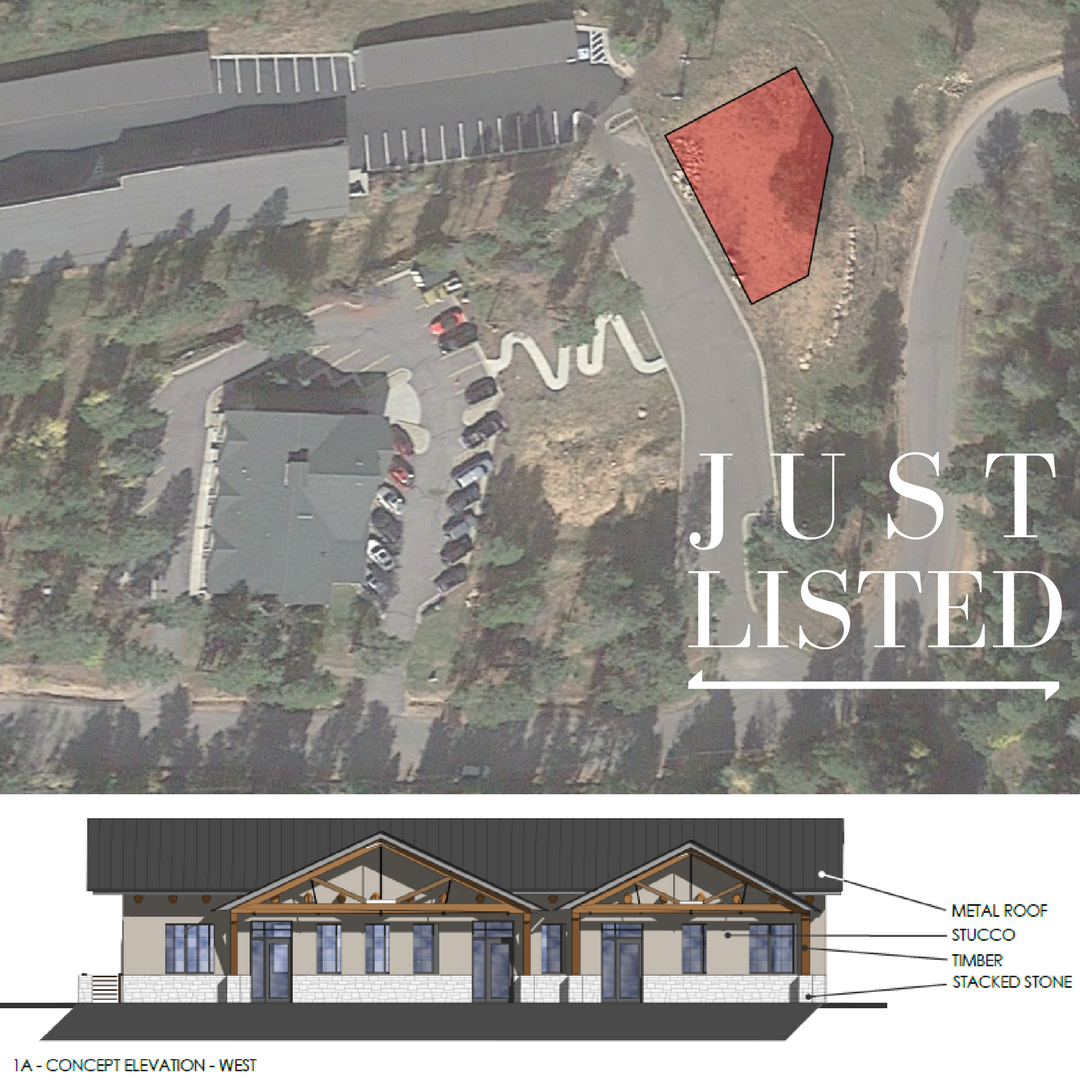

Site approved for an Office Building with 9545 square feet of office space and
2115 square feet of common space. This commercial property represents a
unique owner/investment opportunity for a variety of business, professional or
service uses. Subject property is centrally located behind Staples Shopping
Center in Conifer with easy access to and from Highway 285. Highway 285 is
the primary route from the C-470 and the Greater Denver area to the mountain
areas serving residential, commuter and tourist traffic. Current land use along
Highway 285 serves as a commercial corridor for the surrounding communities
For more information, please visit the listings website.
You may also call Holly Roberts at (410)698-2617.
Conifer Proposed Town Home Project

Featuring 22.82 Acres
Centrally located in Conifer, Colorado on the main 285 corridor which is the
primary route to and from C-470, Denver and local communities. This
unique 22.82 acre project has been approved for 75 Town Homes and has
all approvals and infrastructure requirements in place including water and
sewer. Located just behind the busy Flagship Safeway Shopping Center
with all of its amenities. There is unparalleled NW Mountain views and this
property is located across 285 from top rated Colorado Elementary and
High-schools. Don’t miss out on this highly sought after 22.82 Acre
opportunity!
For more information please visit, the listing website.
You may also call Holly Roberts at (410)698-2617


Seven Phases of Home Renovations
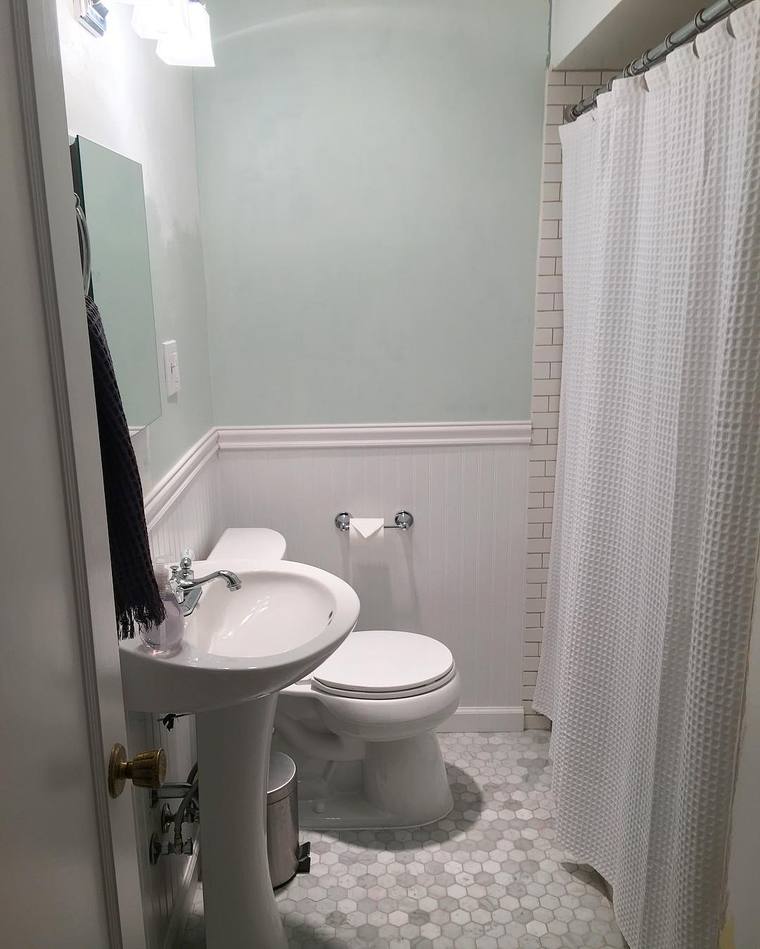
The 7 Phases of Home Renovations:
Phase 1: Get super pumped about an idea. Pin, pin, pin on Pinterest until you’re bursting with excitement. Tell everyone about your amazing project.
Phase 2: Collect materials. Realize things cost a lot. Begin project fueled by coffee, nervous anticipation and adrenaline.
Phase 3: Get halfway through the project. It doesn’t look exactly like your Pinterest board but it’s still cool. Realize you haven’t showered or shaved in +/- 3 days. But it’s all good because you’re 50% there!
Phase 4: There’s visible progress but it’s not totally done. It looks done on the Instagram photo though! But in reality, the project is about 85% complete and it bugs you every time you see that one grout line that needs a little attention or that one corner that needs a little touch up paint. It’s okay though, you’ll get to it this weekend.
Phase 5: Weeks have gone by. The blisters on your hands have healed. You stop noticing the grout line that needs filling or the wall that needs paint. You’re busy enjoying the house and admiring your clean fingernails.
Phase 6: Write a blog about how you’re still not done with that one bathroom you started two months ago.
Phase 7: Complete project, details included. Toast to celebrate. Post more photos to Instagram. Start dreaming of a new project. Pin, pin, pin…
Some people may say the hardest part of a renovation is starting the project. We say it’s that last pesky 5%. We’ll get it done . . . eventually.
For more information on Windermere Evergreen and our team, please contact us here.
Refinancing: What you need to know

 Thanks to all-time-low interest rates, the number of homeowners refinancing their mortgages is at an all-time high. Of course, no one should refinance just because everyone else is doing it. But, for many homeowners, the benefits are simply too hard to ignore any longer.
Thanks to all-time-low interest rates, the number of homeowners refinancing their mortgages is at an all-time high. Of course, no one should refinance just because everyone else is doing it. But, for many homeowners, the benefits are simply too hard to ignore any longer.
Save money each month. According to Freddie Mac (The country’s largest purchaser of home mortgages), the average homeowner who refinances is able to cut their monthly payment by $108 (almost $1,300 per year) for a $200,000 loan.
Save even more in the long run. If you currently have a 30-year mortgage, refinancing with a 15-year version can save you thousands of dollars in interests over the life of the loan, plus allow you to build equity in your home faster than ever.
Switch to a fixed-rate mortgage. Refinancing with a fixed-rate mortgage gives you the security of knowing that your monthly payment will remain steady, regardless of whether lending rates rise or fall in the years ahead.
Access emergency funds. Something the mortgage industry calls “cash-out refinancing” allows you to take out a new mortgage for more than your current principal balance and use the additional money for other expenses (remodeling, college, a major medical procedure, etc.). Of course, this option should only be considered if you have a real need for the money and a solid plan for paying it back.
Consolidate debt. While consolidating credit card debt under a home loan may not be wise (unless you have a plan for controlling any additional spending), refinancing to consolidate two mortgages at these record-low rates can provide significant savings in both cases.
Things to consider beforehand:
Before moving ahead with a refinance of your own, a number of factors need to be considered (and numbers crunched) before you can determine how much you’ll actually benefit and if you can qualify for the best rates:
Closing costs. The fees associated with refinancing your mortgage are called “closing costs” and generally add up to somewhere between three and six percent of your loan amount (between $7,500 and $15,000 for a $250,000 mortgage refinancing). While there are ways to lower some of those costs, you’ll still want to weigh those expenses against how much you stand to gain.
For example, let’s say you figure you’ll be able to save $100 per month by refinancing, and you’ve calculated the closing costs at about $10,000. That means you’ll need to continue living in the house for at least eight more years before the savings surpass the closing costs. In the mortgage industry, this is referred to as the break-even point; and the longer you continue living in the house beyond the break-even point, the more money you’ll save.
Your credit score. It depends on the circumstances, but most borrowers will need a credit score of 700 or higher to get access to the best rates and closing costs. To determine your score, get a copy of your credit report from Experian, Equifax and TransUnion. (Why all three? Because, if there’s any difference, most banks will use the lowest score.)
Your current level of home equity. To qualify for refinancing, your current level of “equity” (the difference between the market value of your home and the balance of your current mortgage) typically must be 20 percent or more. That means, if the market value of your home is $250,000, the remaining balance on your loan would have to be $200,000 or less.
Pre-payment penalty. Check to see if your current mortgage includes a pre-payment penalty for refinancing. That would likely make refinancing too expensive even at these record-low rates.
The importance of timing
Mortgage rates have sustained record lows over the last few years, and they will likely stay relatively low for the next few years. However, even a small increase can make a drastic change in the amount of money you will pay over the duration of your loan. Getting the lowest rate you can, will benefit your finances over the long-term.
Getting the process started is easy. Begin by checking your equity and credit score, then crunch the numbers using one of the many online mortgage calculators.
If the initial results look promising, ask your Windermere Real Estate agent for a recommendation on a reputable lender (or mortgage broker) who can provide you with an actual quote.
25 Ways to Make the Most of Small Spaces
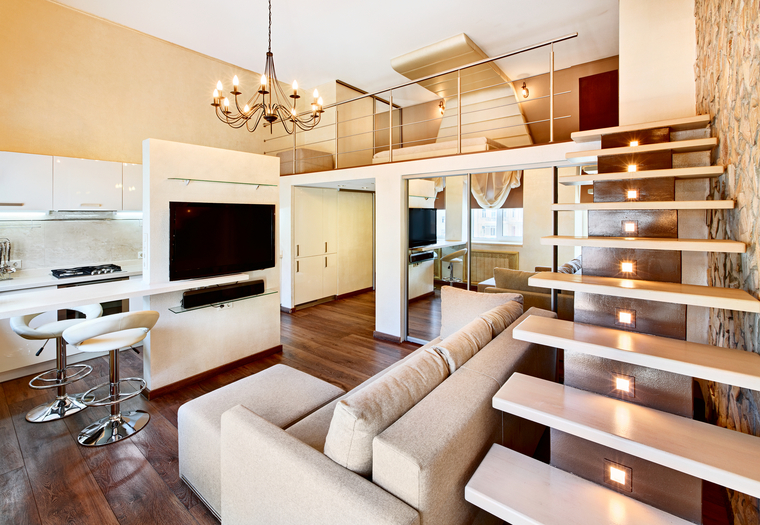

Suburban homes—with their large spaces, big yards, and separate bedrooms for every child—will always be popular with families, especially families of four or more. But there’s also a contingent today that’s eager to live in a dense urban setting: a high-rise condominium in the downtown core, a small home in an urban neighborhood, a small apartment, or even a shared housing arrangement. For those people, designing, furnishing, and organizing these living spaces will require a very different approach.
Urban living spaces are usually much smaller than suburban homes, which means, if you use traditional furnishing and space-planning techniques, you’re bound to be frustrated by the outcome. But with a little planning and creativity, you can create a fully functional space that belies its size.
Small-space planning ideas
- Start with the biggest, most important piece in each room (the sofa, the dining room table, the bathroom sink, etc.), then plan the rest of the space around that item.
- Focus on the needs of those who will be living in the home full-time. Leave any accommodations for guests until later.
- Work to make every space multifunctional (e.g., a kitchen island that can also be used for eating; a home office that can also function as a TV room and/or guest room).
- Look for any opportunity to increase the amount of sunlight. Install glass doors and skylights, and leave windows unobstructed.
- The fewer walls separating spaces, the more open and spacious it will appear.
- Traditional staircases are an inefficient use of space. If you’re designing from the ground up, consider a spiral staircase instead.
- Light paint colors (especially white) will make a room look more spacious. The combination of light walls with a dark floor will magnify the effect even more. Consider painting one wall a contrasting color to create a stylish focal point.
Furnishing solutions for small spaces
- Your furnishings should be small mobile and, when possible, stackable. That way, spaces can be quickly reorganized to suit different situations.
- Furnishings that blend with the colors of your walls or floors (or are transparent) will make the space appear less cluttered. To add personality and warmth, accentuate with colorful throw pillows and rich fabrics.
- If you keep most furnishings against the walls, traffic flow will be improved, and it will make rooms feel larger.
- Furnishings that hang from the walls or have legs will also create the illusion of more space.
- In many cases, bench seating is better than individual chairs, because benches can accommodate more people and can be used as side tables when no one is sitting on them.
- Instead of a coffee table, consider small side tables. Instead of a full-size sofa, try a three-seat version, or even a love seat (just two cushions).
- A large, wall-mounted mirror will make the space appear larger.
- An open-sided bookshelf can do double-duty as an interesting room divider. Leaving it half empty will allow natural light to shine through.
- A table on wheels is good for the kitchen. Use it as an island in the center of the kitchen or roll it to the side and use is as a side counter.
- Consider using an under-counter refrigerator, together with an under-counter freezer, instead of one large, freestanding unit.
- In small spaces, there is no room for furnishings you don’t love. If something isn’t getting used much, or if you don’t really care for it, get rid of it.
Organizing small spaces
- The best furnishings are those that include storage space (a dining room table with drawers; an ottoman with a hollow interior; a bed that sits on a storage unit).
- Bookshelves and other wall-storage systems should be thin and as tall as possible to maximize storage while minimizing the amount of floor space used.
- Storage pieces with doors keep small rooms from looking cluttered and unkempt. Even glass doors can help achieve this effect.
- Remove food goods from their air-filled boxes and bags and store them in space-saving, stackable containers.
- Store larger things (like a vacuum cleaner, electronics, etc.) behind a free-standing decorative screen.
- A professionally designed closet storage system can double, and even triple, the space for your clothes. Removing the door(s) to the closet will ease access.
- Wall-mounted hooks are ideal for coats and much more. Pot racks are great for freeing up valuable cabinet storage space in the kitchen.
Many people think you need to sacrifice in order to live in a small space. But with these suggestions, you can simply adapt and enjoy your home to the fullest.
For more information on Windermere Evergreen please contact us here.
 Facebook
Facebook
 X
X
 Pinterest
Pinterest
 Copy Link
Copy Link

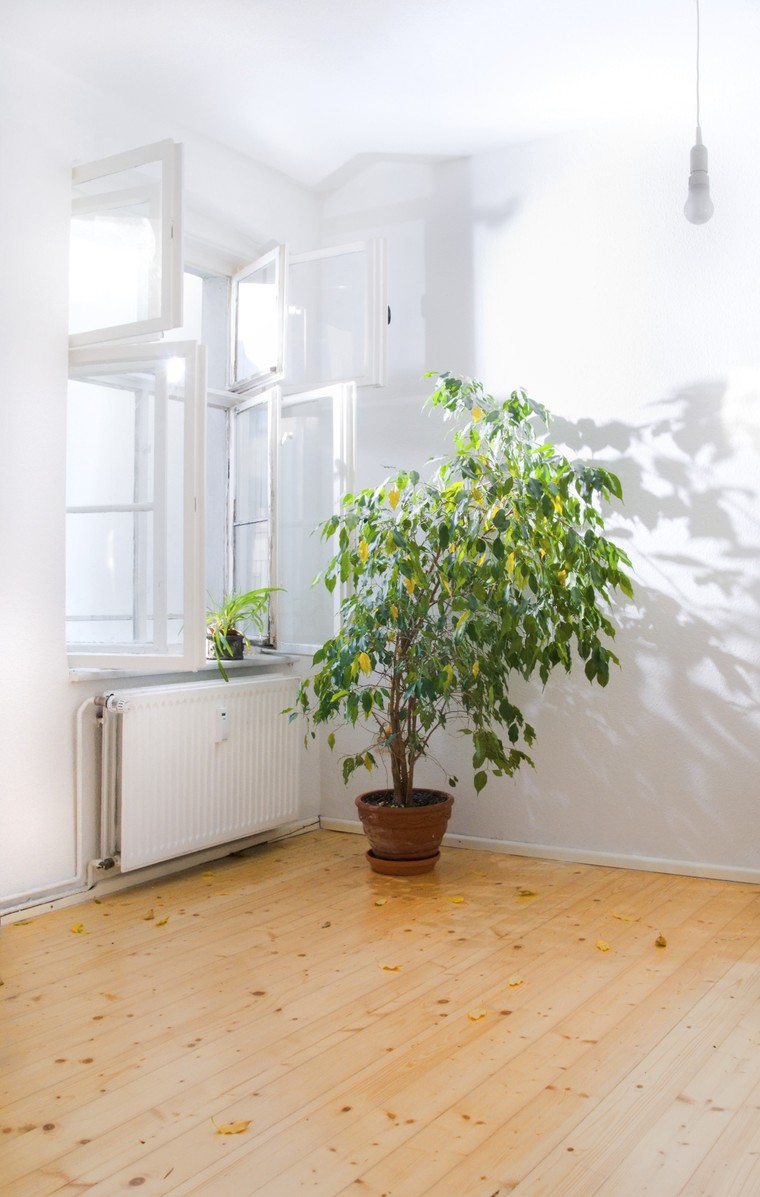
 Most of us tend to think of air pollution as something that occurs outdoors where car exhaust and factory fumes proliferate, but there’s such a thing as indoor air pollution, too. Since the 1950s, the number of synthetic chemicals used in products for the home has increased drastically, while at the same time, homes have become much tighter and better insulated. As a result, the
Most of us tend to think of air pollution as something that occurs outdoors where car exhaust and factory fumes proliferate, but there’s such a thing as indoor air pollution, too. Since the 1950s, the number of synthetic chemicals used in products for the home has increased drastically, while at the same time, homes have become much tighter and better insulated. As a result, the 



